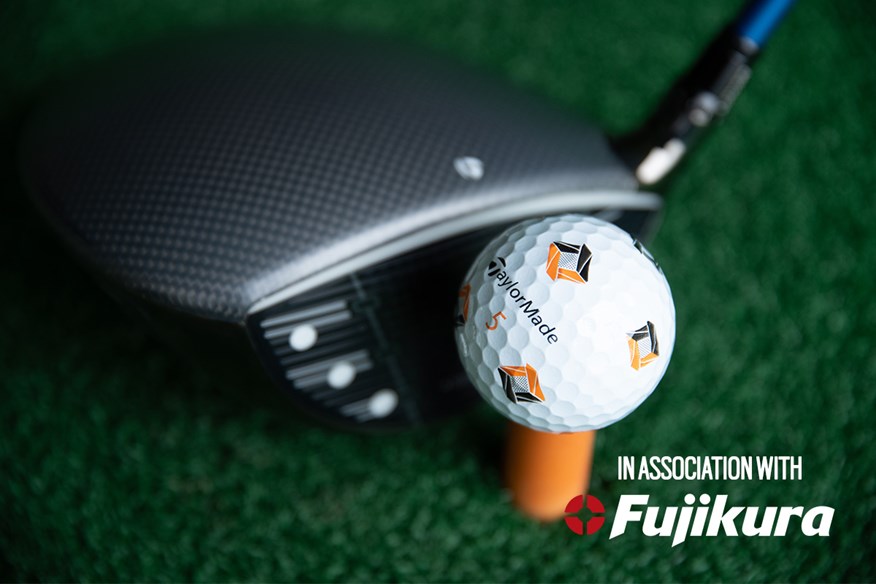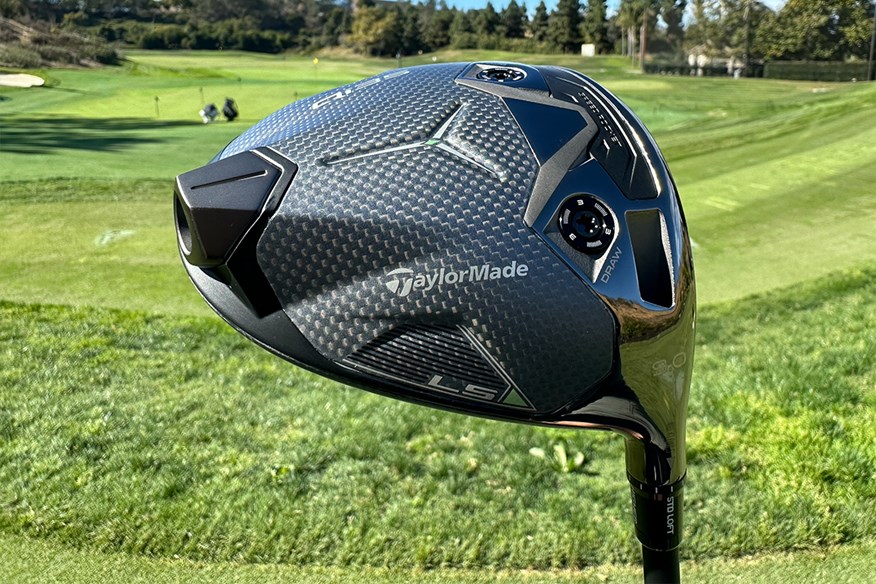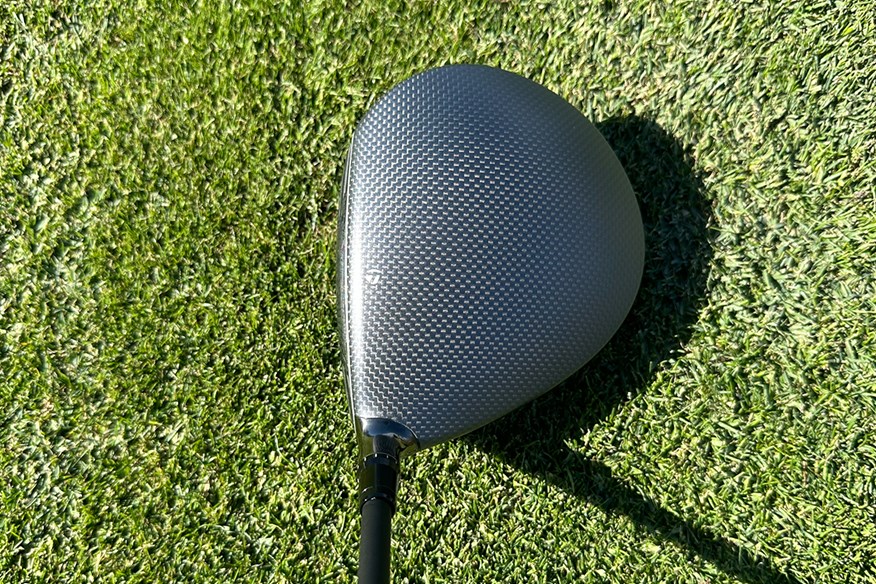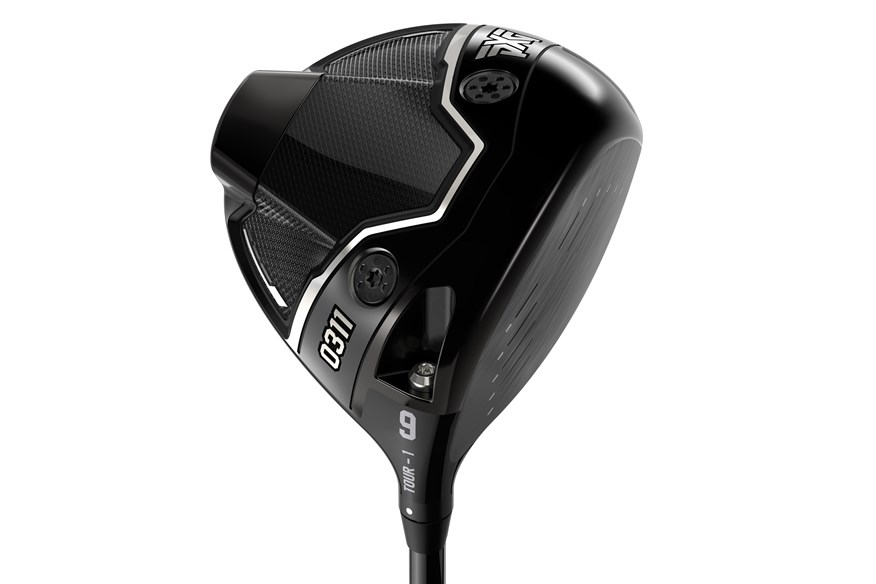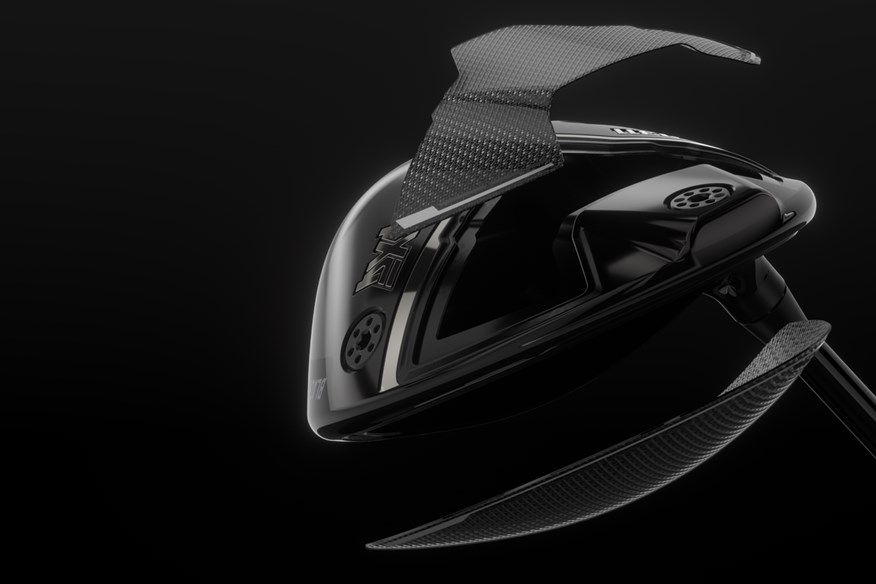These are the drivers that will gain you the most yards in 2025… but there’s a catch!
Last updated:

After scouring through 1,500 launch monitor data points of the best drivers in 2025, we reveal the kings of distance…but are they right for your game?
For as long as the game exists, golfers will seek to find the best driver to help them extract every last yard from their physical exertions on the tee box.
There are few better feelings in golf than spinning around, trying to be humble after bombing the longest drive in your playing group. And while there’s no guarantee of birdie to follow, for those few seconds, your triple bogey on the last is forgotten.
The lure to prioritize distance above all else in a driver also isn’t helped watching the likes of Rory McIlroy and Bryson DeChambeau nailing 350-yarders and then flicking a wedge to a few feet. The game looks infinitely easier all of a sudden.

Should you use the same driver as the pros, then?
Perhaps. But simply plumping for the latest winning tour models will likely be fraught with pitfalls unless you are a confident and consistent ball striker, capable of swinging over 110 mph.
Even then, your swing may be better matched with the blend of distance and accuracy offered in the best forgiving drivers category. Ultimately, the decision for most club golfers should come down to playability, as TG Equipment Writer, a former Master Custom Fitter, and Club Builder Lewis Daff explained.
“If you strike it pure, there are absolutely no issues with gaming a tour-level model. But we have to consider not just what looks best on paper, but what works best for golfers in real-world conditions.”
It’s for this reason that we had to look beyond the ‘best on paper’, and turn our attention to other models we felt a wider audience of club golfers could be fitted into. This involved balancing out a range of variables from our 2025 Best Drivers Test to provide you with our most informed interpretation of the data.

But what if I am an absolute flusher?
Then you’re in the right place, and we can take a deeper dive into the determinants of distance as dictated by physics.
In prioritizing performance over playability, manufacturers primarily concentrate efforts in two areas, namely increasing ball speed and reducing spin. Ball speed is the single most important factor in how far a ball travels. It’s why tour-level models are typically designed with more compact head shapes to maximize club speed and adjustable weighting which allows mass to be distributed forward to minimize the loss of energy at impact.
Our 37 model test ranked the TaylorMade Qi35 LS at No.1 for ball speed (169.7 mph) and additionally for carry distance (298.0 yds). The Titleist GT3 came in second for both at 165.7 mph and 292.8 yds.
Massive distance for those who can handle it
TaylorMade have outdone themselves with the Qi35 LS, in terms of how much distance is on offer. With the fastest ball speed and carry yardage from any driver this year, it’s an outstanding product for those looking for pure power. There’s a legitimate argument to be made that the Qi35 LS could have made it into the Best Overall Top 3, but we were concerned that this head may not be viable for golfers who miss the center of the face. If you can keep control of your strike and direction though, you won’t beat this driver in 2025.
What our tester says:
Ridiculously fast. The LS feels like the ball is never going to stop when you catch it right. Will it work for most golfers? Probably not, compared to forgiveness of the normal Qi35 head, but my goodness it’s powerful. The looks are just as good as the feel!
You can read our full review of the TaylorMade Qi35 LS Driver here.
Key drivers test data:
Ball Speed 167.0 mph | Carry 298.0 mph | Spin (Total) 2,256 rpm | Launch Angle 13.0º | Height 38.2 yards | Descent Angle 40.3º | L-R Dispersion 23.3 yards
Pros
- Best Low Spin Driver Award winner of 2025
- Outstanding Modern Looks
- The Longest Driver of 2025
Cons
- Not forgiving enough for all golfers' needs
| RRP | £529.00 / $649.00 |
| Lofts | 8º (RH), 9° / 10.5° (RH/LH) |
| Head Size | 460cc |
| Lie | 56º |
| Stock Shaft Length | 45.75” |
| Stock Shaft Options | Mitsubishi Kai’Li Blue DarkWave CB 60g / Mitsubishi Kai'Li White DarkWave 60g |
| Stock Grip | Golf Pride Z-Grip Black/Silver |
- Ultra Low Center of Gravity
- Multi-Material Construction
- High Moment of Inertia Design
- Trajectory Adjustment System
- Carbon Twist Face
The second critical parameter affecting shot distance is ball spin, or aerodynamic drag to be more precise. As ball spin increases, so too does the aerodynamic drag on a golf ball, reducing its distance potential.
That’s why the majority of tour pros are fitted into low-spin driver models that help minimize this effect. For many club golfers, however, this can have the opposite intended outcome of causing their ball to fall out the sky prematurely. Pros on the other hand are more proficient at manipulating launch characteristics to create the sufficient lift at impact required to produce long, penetrating ball flights.
Our 37 model test ranked the PXG Black Ops Tour as the lowest spinning driver (2,126 rpm), but only ranked 10th for carry distance (286.4 yds) due to registering ball speeds below our test mean (162.9 mph), thus demonstrating why speed is key.
Designed to deliver maximum forgiveness without compromise.
You can read our full review of the PXG 0311 Black Ops Tour-1 driver here.
Key drivers test data:
Ball Speed 162.9 mph | Carry 286.4 mph | Spin (Total) 2,126 rpm | Launch Angle 12.6º | Height 33.1 yards | Descent Angle 38.4º | L-R Dispersion 45.6 yards
Pros
- The Black Ops Tour-1 is PXG's most complete high-performance driver to date.
- The unique launch characteristics appear to help mishit performance.
- There's a good selection of stock shafts plus lots of premium upgrade choices.
- PXG's weight and length fitting capability is second to none.
Cons
- Keep an eye on the PXG website as prices can fluctuate regularly.
| Lofts | 8° / 9° / 10.5° |
| Stock shafts | A range of premium shaft options are available. |
| Stock grip | PXG Z5 Black as standard. |
Carry distance rankings
Unsurprisingly, our test pro’s top 10 ranked drivers for carry distance during our 2025 testing were all low-spin models, typically set up with the weight distributed in a forward position when permitted.
The best core model for driver for distance was the Wilson Dynapwr Carbon which ranked 14th overall for carry (284.8 yds), thanks largely to an impressive performance in the ball speed department (165.3 mph, 6th).
Here’s our top 10 ranked drivers for carry distance from our 2025 testing, but as always, be sure to go and get a proper fitting before parting with your cash. It’s the only way to ensure you are in an optimized set-up for your swing.
| Carry Rank | Manufacturer | Model | Loft (°) | Clubhead Speed (mph) | Ball Speed (mph) (+/- SD) | Carry Distance (yds) (+/- SD) | Spin Total (rpm) (+/- SD) | Launch Angle (°) | Height (yds) | Descent Angle (°) | L-R Dispersion (yds) |
| 1 | TaylorMade | Qi35 LS (Forward) | 10.5 | 119.1 | 167.0 (1.3) | 298.0 (8.1) | 2,256 (397) | 13.0 | 38.2 | 40.3 | 23.3 |
| 2 | Titleist | GT3 | 10.0 | 117.3 | 165.7 (1.0) | 292.8 (3.1) | 2,378 (186) | 13.0 | 38.9 | 41.6 | 25.2 |
| 3 | Titleist | GT4 (Forward) | 10.0 | 116.6 | 165.1 (1.3) | 292.4 (6.0) | 2,274 (363) | 12.9 | 37.1 | 39.9 | 33.3 |
| 4 | Callaway | Elyte Triple Diamond (Forward) | 10.5 | 116.5 | 165 (1.5) | 290.8 (6.7) | 2,202 (323) | 11.6 | 32.3 | 36.9 | 33.7 |
| 5 | Ping | G440 LST | 10.5 | 115.6 | 164.7 (2.1) | 289.8 (5.4) | 2,502 (311) | 13.7 | 41.6 | 43.8 | 17.7 |
| 6 | Srixon | ZXi LS (Forward) | 10.5 | 117.6 | 164.4 (1.0) | 289.4 (4.4) | 2,365 (191) | 12.7 | 37.2 | 41.7 | 46.8 |
| 7 | Cobra | DarkSpeed- Adapt LS (Forward) | 10.5 | 117.9 | 164.4 (2.2) | 287.1 (6.4) | 2,504 (414) | 13.3 | 39.9 | 42.7 | 34.8 |
| 8 | Wilson Staff | DynaPower LS (Forward) | 10.5 | 114.6 | 162.2 (1.9) | 286.4 (4.7) | 2,228 (194) | 12.8 | 35.1 | 39.6 | 13.6 |
| 9 | PXG | Black Ops Tour (Rear) | 10.5 | 114.8 | 162.9 (2.5) | 286.4 (11.1) | 2,126 (594) | 12.6 | 33.1 | 38.4 | 45.6 |
| 10 | Titleist | GT4 (Rear) | 10.0 | 117.2 | 163.1 (2.0) | 277.7 (13.2) | 2,876 (558) | 12.8 | 39.7 | 43.5 | 50.9 |
How we tested the best golf drivers
We’re dedicated to making sure that we at Today’s Golfer are clear and transparent on how we test equipment, so you know you can trust the data that you read.
For drivers, our test pro hits balls with each driver until we have six good shots, while we track every piece of data on a GC Quad launch monitor. Any drives that our test pro felt weren’t a fair representation of the club – severe mishits, etc – were discarded and replaced with another shot. Thanks to our test pro’s remarkable consistency, this was a very rare occurrence!
The test lab
The test was conducted under strict conditions, overseen by a former Team GB bio-mechanist, at an indoor facility. We chose to test indoors to eliminate the influence of wind or temperature changes.
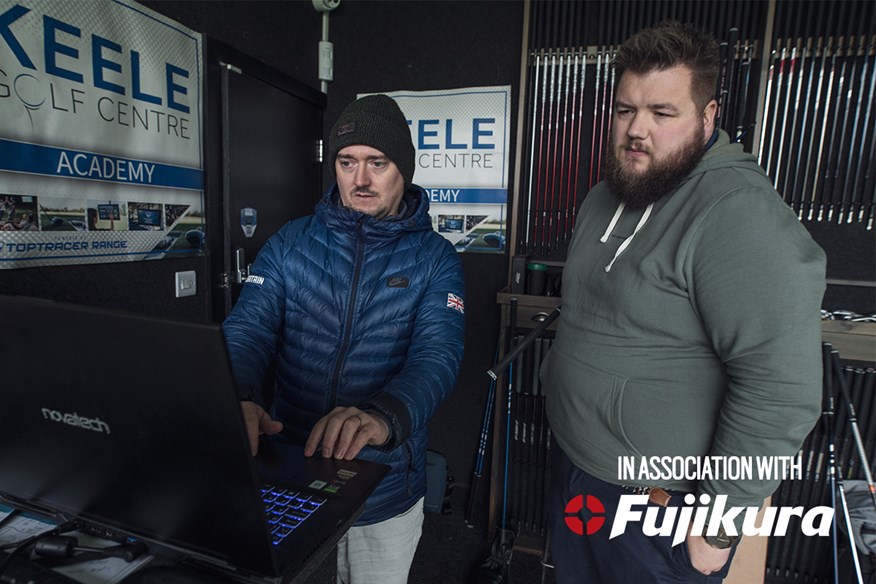
Shaft
All of the drivers were tested using the same shaft, which eliminates a variable and helps us compare the performance of the driver heads.
We partnered with one of the most high-grade performance-based companies in golf, Fujikura, to ensure our test pro had a shaft that helped with a consistent and reliable delivery from the first swing to the last of the almost 400 he hit during testing. Partnering with a company of Fujikura’s standing meant we’re able to trust the data we produced.
Fujikura produce an incredible selection of aftermarket golf shafts for your woods, hybrids, irons, and even putters, across a wide choice of profiles and designs. The company is committed to excellence in the creation of premium, performance-first equipment that allows every level of golfer to trust their swing every time they deliver club to ball.
Having been at the forefront of golf innovation for over 30 years, Fujikura have produced countless successful models over the years, including legendary names like Speeder, Motore, and the now iconic VENTUS that can be seen dominating professional tours all around the world.
We worked with the Fujikura team’s deep knowledge to find the perfect shaft for our tester, so that every driver head is given the chance to perform to the best of its capabilities. The specification was:
Model: Ventus VeloCore+
Profile: Blue
Weight: 60g
Flex: X-Stiff
Length: 45” (to end of shaft)
Grip: Golf Pride Tour Velvet .60R (1 Layer of Tape)
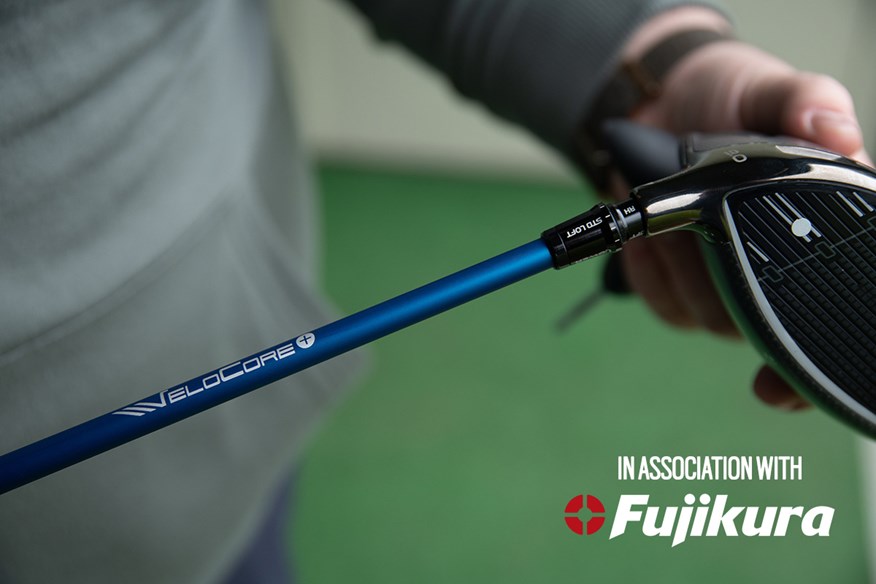
Loft
We tested all the driver heads in a 10.5º loft (Titleist being the exception at 10º, as they do not produce a 10.5º head) with standard hosel/sleeve settings so we can compare them like-for-like. Drivers with front-back adjustable weight options were tested in both forward and rearward weight configurations.
The golf ball
To get the best and most reliable data possible we always insist on using a premium golf ball.
Over the last few years we’ve used several of the best golf balls to conduct our testing, including the Callaway Chrome Tour, Bridgestone Tour-B, and Titleist Pro V1. This year we used the TaylorMade TP5.
The TP5 offers consistency and performance that is up to the standards of numerous tour pros, including Rory McIlroy and Tommy Fleetwood, and has won many Majors.
